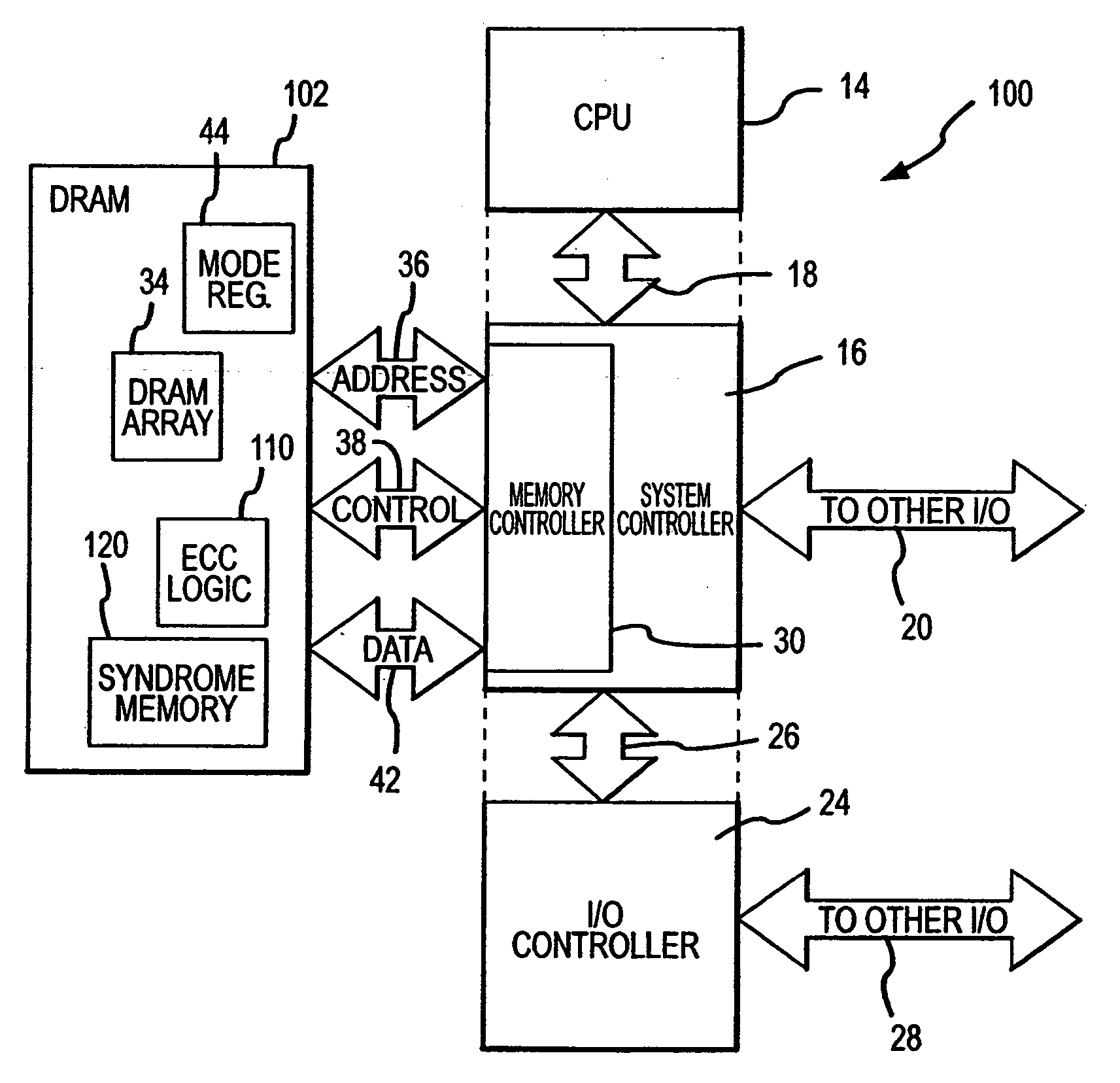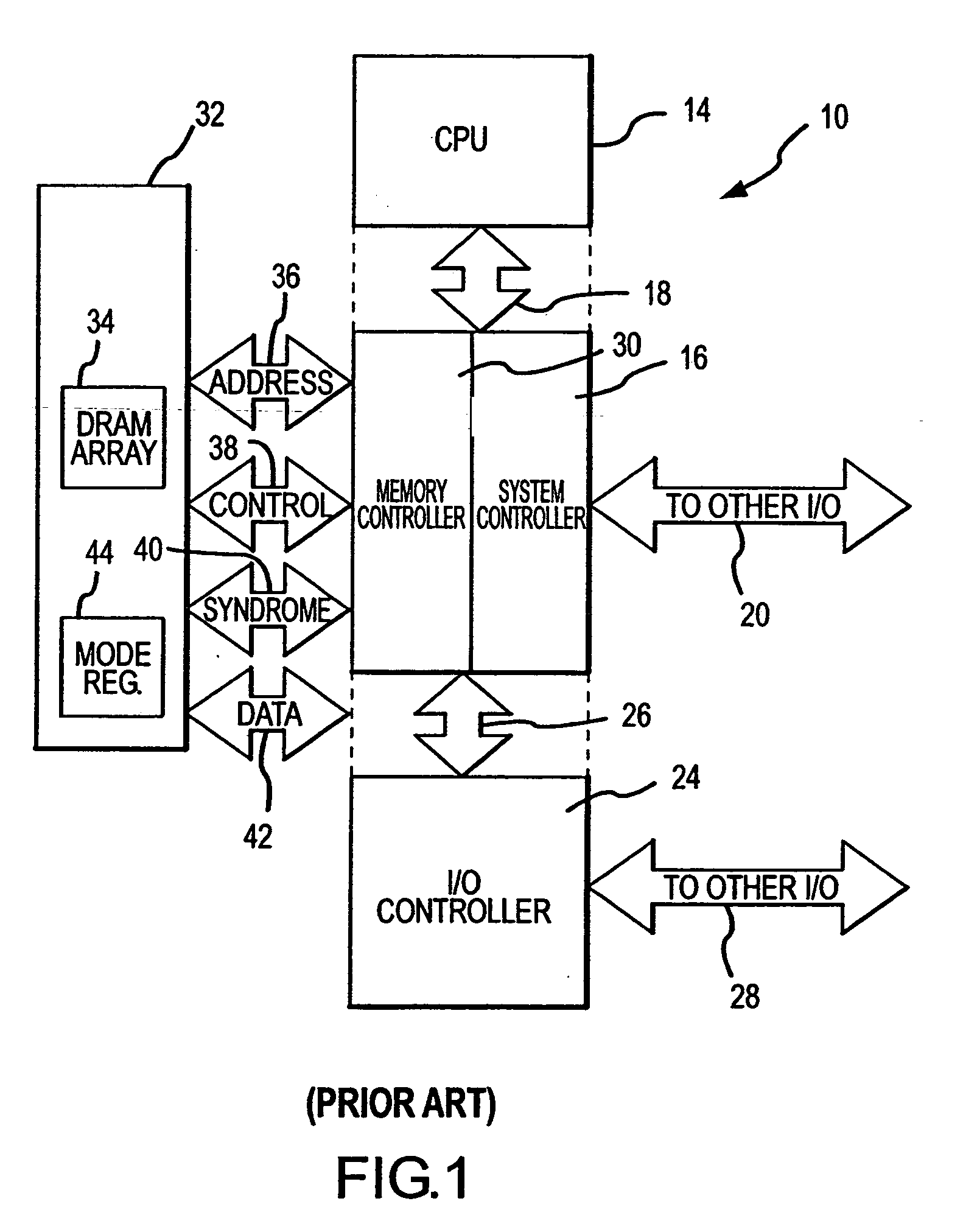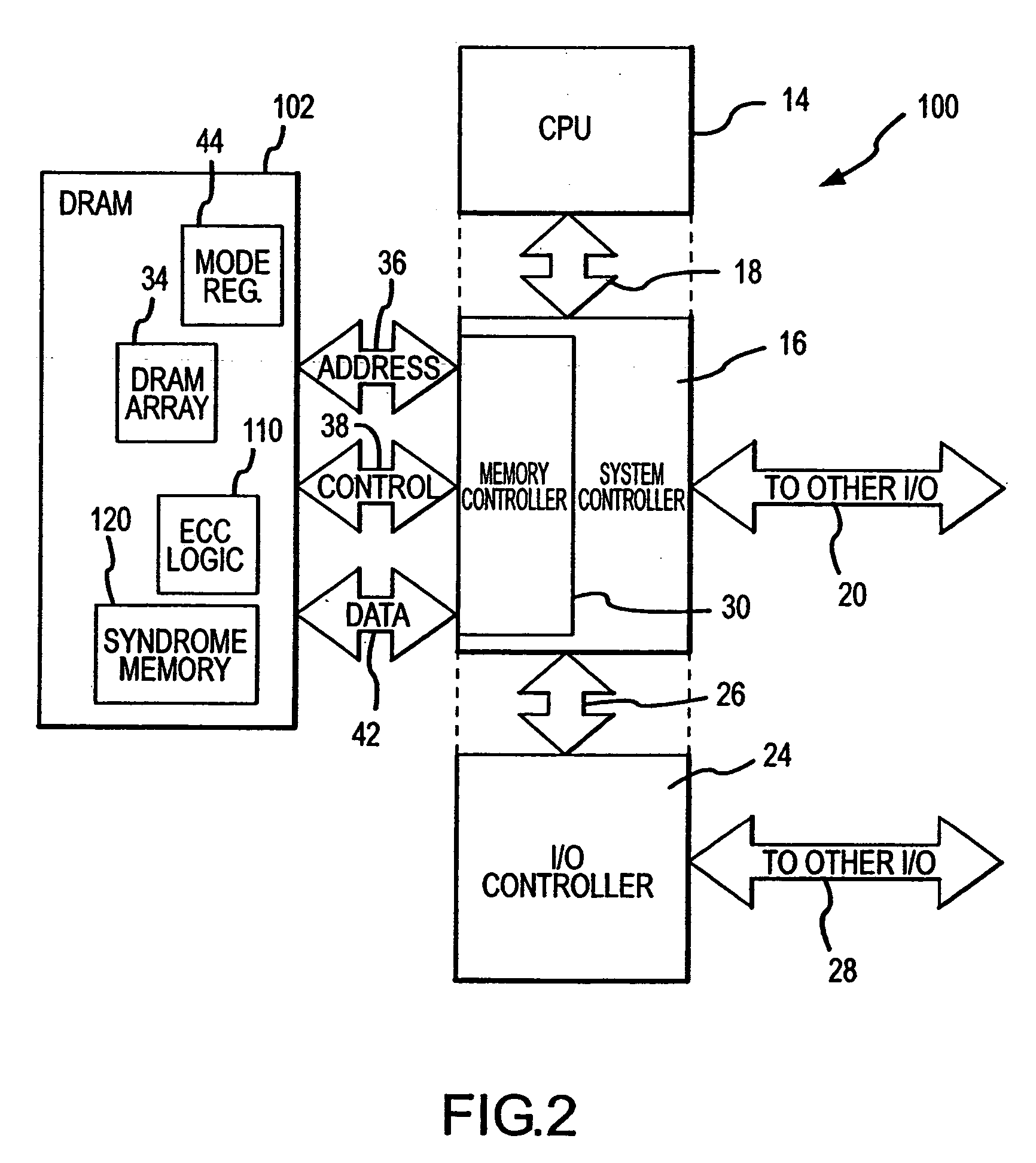Memory system and method using ECC to achieve low power refresh
a memory system and memory technology, applied in the direction of digital storage, redundant data error correction, instruments, etc., can solve the problems of increasing the power consumption of a dram device with both the capacity and the operating speed, and the limited use of portable electronic devices such as notebook computers
- Summary
- Abstract
- Description
- Claims
- Application Information
AI Technical Summary
Benefits of technology
Problems solved by technology
Method used
Image
Examples
Embodiment Construction
[0018] A computer system 100 according to one embodiment of the invention is shown in FIG. 2. The computer system 100 uses many of the same components that are used in the conventional computer system 10 of FIG. 1. Therefore, in the interest of brevity, these components have been provided with the same reference numerals, and an explanation of their operation will not be repeated. The computer system 100 of FIG. 2 differs from the computer system 10 of FIG. 1 by including a DRAM 102 that includes a syndrome memory 120 and ECC logic 110, and by omitting a syndrome bus. As explained in greater detail below, prior to entering a reduced power refresh mode, the ECC logic 110 generates a syndrome from data stored in the DRAM array 34 and then stores the syndrome in the syndrome memory 120. The ECC logic 110 uses the stored syndromes to check and then correct data read from the DRAM array 34 during low power refresh, which occurs at a rate that is sufficiently low that data retention error...
PUM
 Login to View More
Login to View More Abstract
Description
Claims
Application Information
 Login to View More
Login to View More - R&D
- Intellectual Property
- Life Sciences
- Materials
- Tech Scout
- Unparalleled Data Quality
- Higher Quality Content
- 60% Fewer Hallucinations
Browse by: Latest US Patents, China's latest patents, Technical Efficacy Thesaurus, Application Domain, Technology Topic, Popular Technical Reports.
© 2025 PatSnap. All rights reserved.Legal|Privacy policy|Modern Slavery Act Transparency Statement|Sitemap|About US| Contact US: help@patsnap.com



